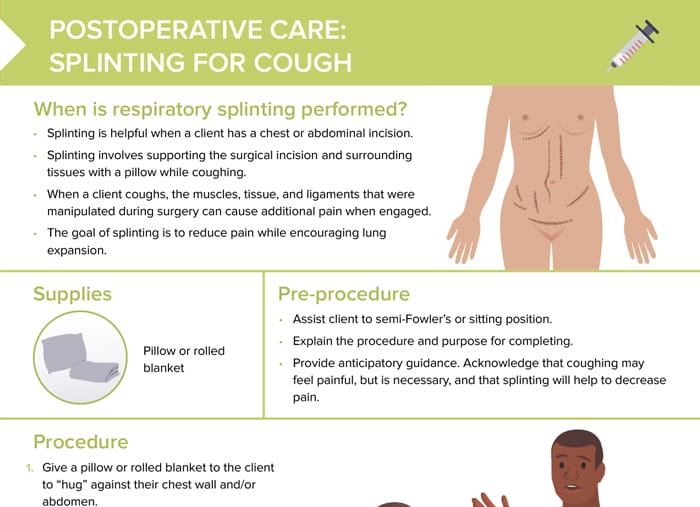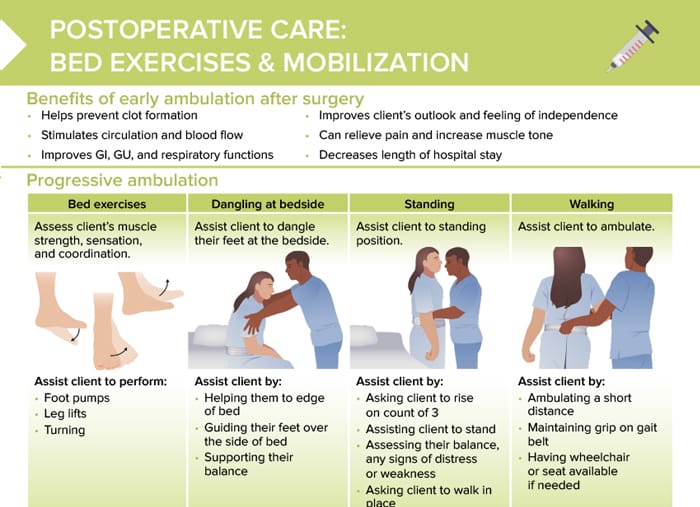What is early ambulation after surgery, and why is it so important?
Early ambulation after surgery refers to the practice of getting patients up and moving around as soon as possible following a surgical procedure.
Benefits include:
- Helps prevent clot formation
- Stimulates circulation and blood flow
- Improves GI, GU, respiratory functions
- Improves client’s outlook and feeling of independence
- Can relieve pain and increase muscle tone
- Decreases length of hospital stay
Assistive devices and safety measures
- Prior to ambulation, ensure all safety devices are in use and that the client has the proper mobilization devices.
- Be aware of any limitations or activity restrictions set by the provider.
- Assistive devices: gait belt, non-slip socks, walker or cane
Client education & nursing tips around ambulation after surgery
- Marking distances in the unit can quantify distances for documentation and help with goal setting.
- Assess whether you need additional assistance.
- Coordinate with physical and occupational therapy.
- Make sure IV poles are unplugged and catheters are secured.
- Include family members in early ambulation.
- Provide encouragement and reassurance. Client may not be able to walk on first attempt. Can encourage standing.
Steps and actions in progressive ambulation after surgery for mobilization
#1 Bed exercises
- Assess client’s muscle strength, sensation, and coordination.
- Assist client to perform foot pumps, leg lifts, and turning.
#2 Dangling at bedside
- Assist client to dangle feet at the bedside.
- Help them to the edge of the bed.
- Guide their feet over the side of the bed.
- Support balance.
#3 Standing
- Assist client to standing position.
- Ask the client to rise on the count of 3.
- Assess client’s balance and any signs of distress or weakness.
- Ask client to walk in place.
#4 Walking
- Assist client to ambulate.
- Start with a short distance.
- Maintain grip on gait belt.
- Have wheelchair or seat available if needed.
How to document postoperative ambulation
Documentation should include:
- Distance client ambulated
- Level of assistance required
- Any assistive devices used
- Client’s balance and gait
- Response to ambulation
- Any falls or incidents
- Client teaching completed
Example exercises after specific surgeries
Knee exercises after surgery
- Quad sets (tightening the thigh muscle with the leg straight and holding)
- Ankle pumps
Breathing exercises after surgery
Carpal tunnel exercises after surgery
- Wrist flexion and extension
- Tendon gliding exercises
Shoulder/rotator cuff exercises after surgery
- Passive range of motion (caregiver or therapist moves arm in various directions without patient using muscles actively)
- Pendulum exercises (letting arm hang and swing in small circles)
- Scapular squeezes (pulling shoulder blades together to strengthen upper back muscles)

